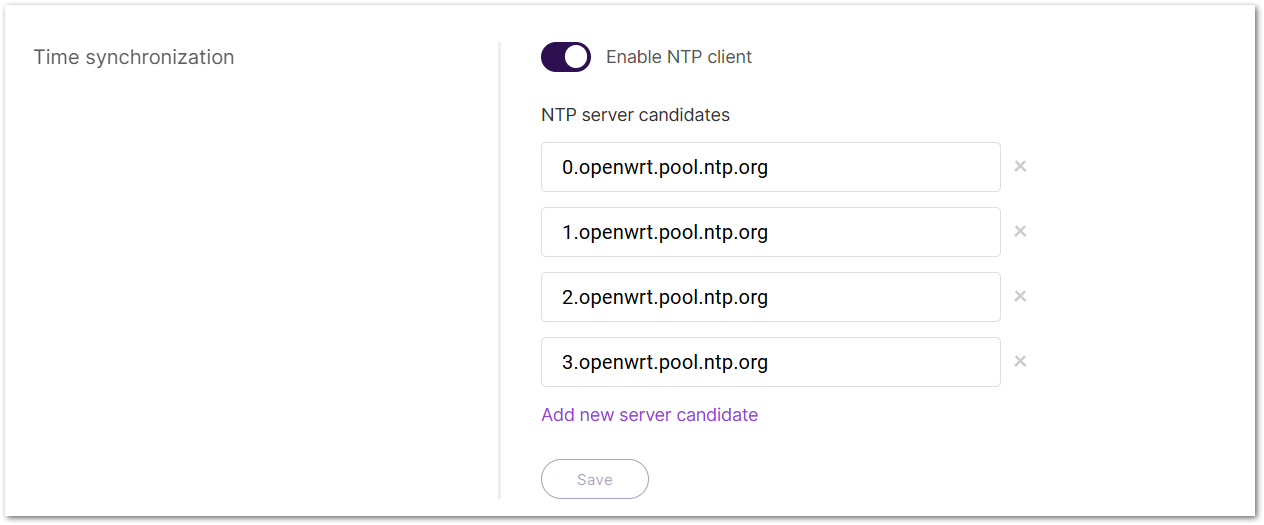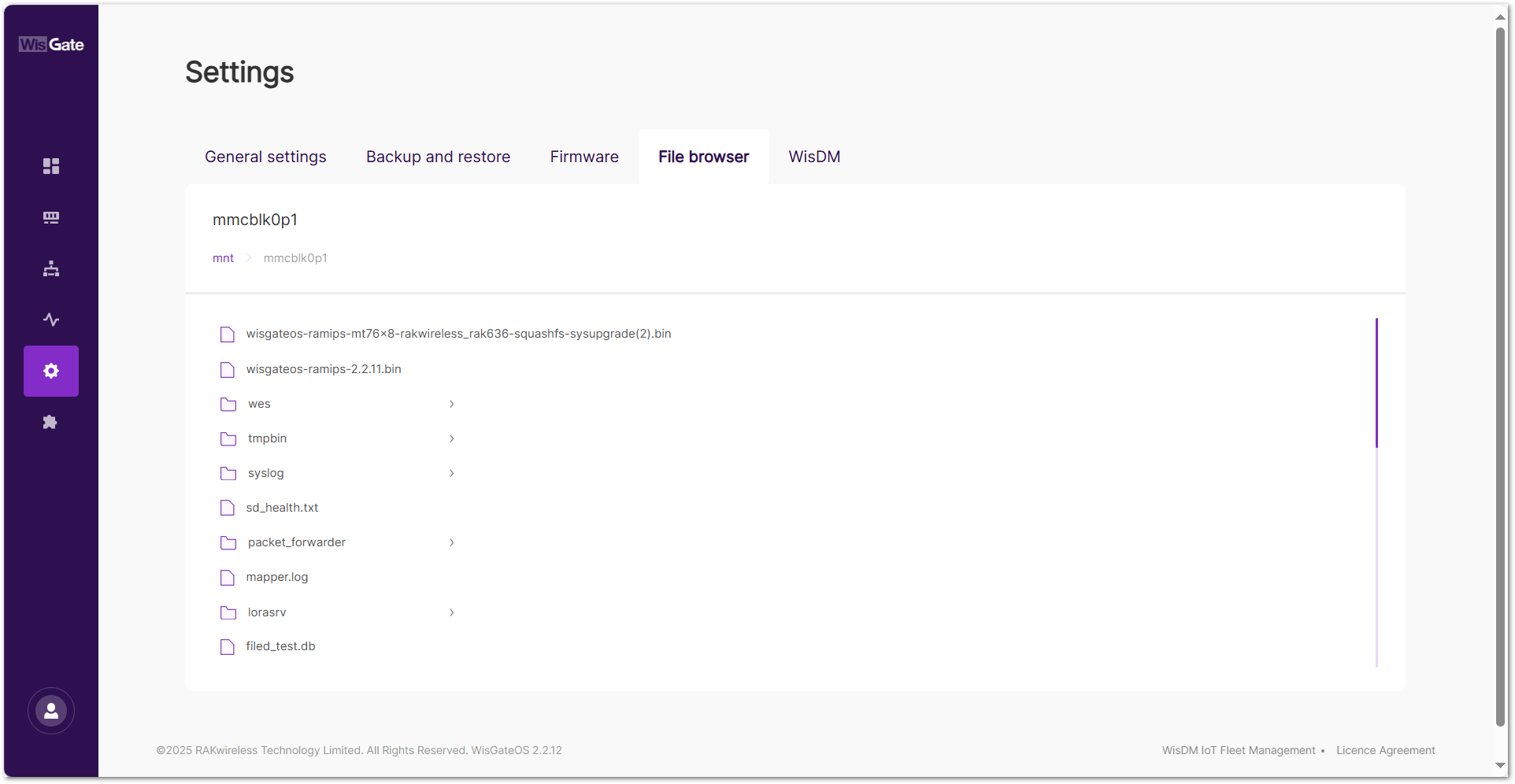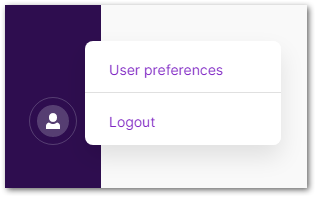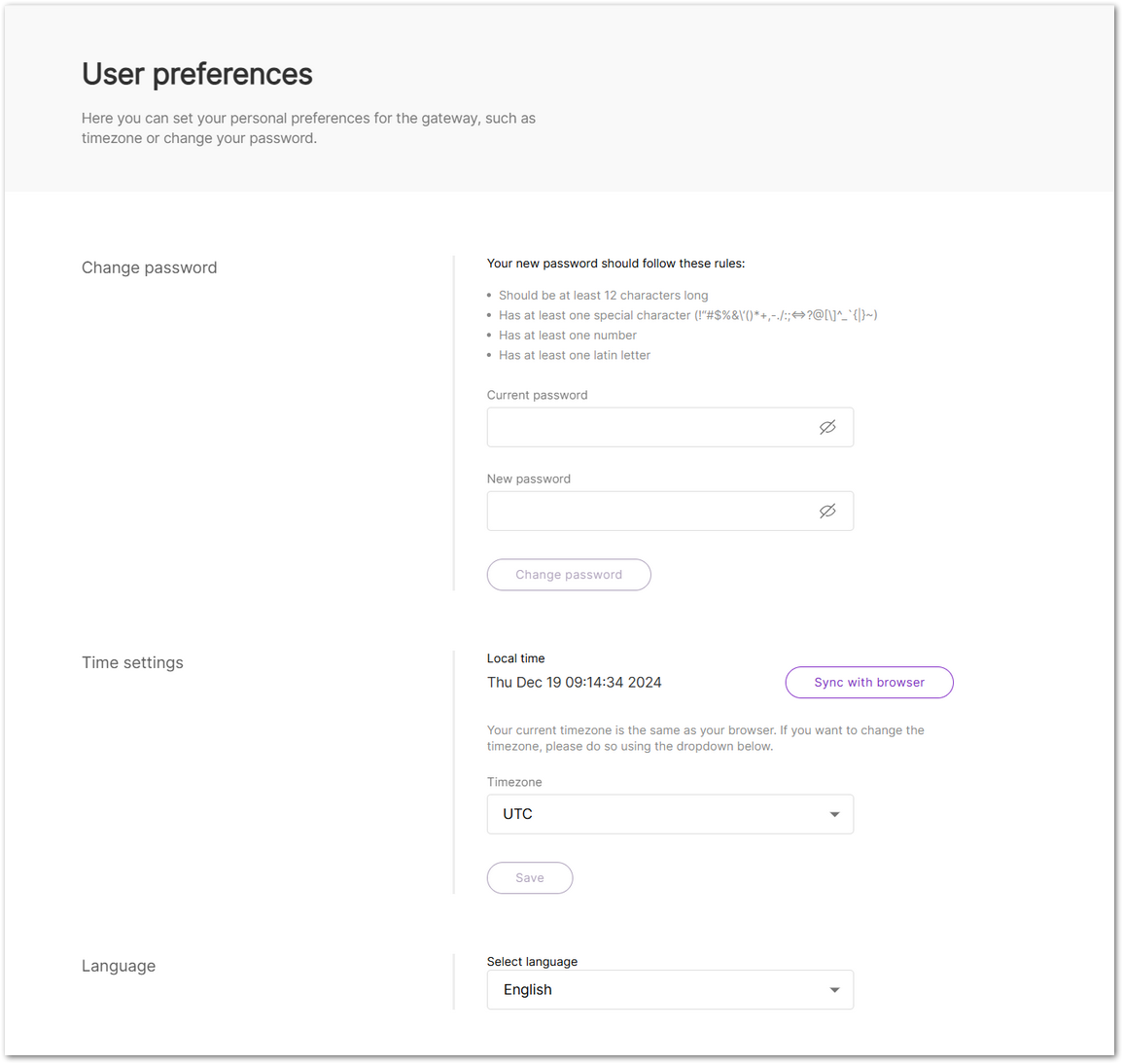System Settings
In the Settings section, you can manage and configure various settings of the gateway, including changing its name, setting up system logs, synchronizing time, managing backups and restores, accessing files, and customizing user preferences.
General Settings
The General Settings tab provides options to modify the gateway's name, configure system logs, synchronize time via an NTP server, and reboot the device.
Change the Gateway Name
The default gateway name can be updated to improve identification within a network.
 Figure 1: Changing the gateway name
Figure 1: Changing the gateway name- Navigate to Settings > General settings.
- Enter the desired name in the Name field.
- Click Save to apply the change.
Configure the System Log
The System Log settings allow management of log storage and forwarding logs to an external server for monitoring, troubleshooting, and long-term analysis.
 Figure 1: Configure the System Log
Figure 1: Configure the System Log- Navigate to Settings > General settings.
- Set Log Buffer Size: Enter the maximum log buffer size (
in KiB) in the Buffer size (KiB) field (e.g., 64 KiB). 3. Choose Log Retention Period: Select a duration from the Log expiration dropdown:
- 14 days
- 1 month
- 3 months
- 6 months
- 12 months
- Configure External Log Storage (Optional):
- Enter the External system log server IP address if remote log storage is required.
- Specify the Port number used by the external log server.
- Click Save to apply changes.
Time Synchronization
The gateway supports Network Time Protocol (NTP) to maintain accurate system time.
 Figure 1: Time synchronization
Figure 1: Time synchronization- Navigate to Settings > General settings.
- Toggle Enable NTP client to activate time synchronization.
- Configure NTP servers in the NTP server candidates list:
- Click Add new server candidate to add an NTP server (e.g.,
pool.ntp.org). - To remove an NTP server, click the × button next to it.
- Click Add new server candidate to add an NTP server (e.g.,
- Click Save to apply the settings.
Reboot the Gateway
This option restarts the gateway. All unsaved changes will be lost during the reboot.
 Figure 1: Reboot the Gateway
Figure 1: Reboot the Gateway- Navigate to Settings > General settings.
- Click the Reboot button.
- In the confirmation dialog, click Confirm to restart the gateway.
Backup and Restore
This tab enables backup, restore, or reset of the gateway settings to ensure configuration management and recovery.
Backup Configuration
Creating a backup of the current gateway configuration allows restoration when necessary. For added security, the backup file can be encrypted with a password.
 Figure 1: Backup configuration
Figure 1: Backup configuration- Navigate to Settings > Backup and Restore.
- (Optional) Enable Backup Encryption:
- Check the Set password to protect the backup archive box.
- Enter a secure password to encrypt the backup file.
- Click Generate and download backup to create and download the backup archive.
- Store the backup file in a secure location for future use.
Restore Configuration
Restoring a backup reverts the gateway settings to the state saved in the selected archive.
 Figure 1: Restore configuration
Figure 1: Restore configurationRestoring a backup will overwrite the current settings. Make sure the correct file is used.
- Navigate to Settings > Backup and Restore.
- Click choose file or drag and drop the backup archive into the designated upload area.
- After the file is loaded, click the Restore button.
- When prompted for a password:
- Encrypted backup: Enter the correct password, then click Restore again.
- Plain backup: A password dialog still appears, but no password is required. Simply click Restore again.
- Wait for the process to complete. The gateway will automatically reboot.
warning
Do not power off the device during this time.
Reset to Factory Defaults
Resets the gateway to its original factory settings, permanently erasing all configurations.
 Figure 1: Reset to factory defaults
Figure 1: Reset to factory defaultsThis action is irreversible. Ensure you have a backup before proceeding.
- Navigate to Settings > Backup and Restore.
- Click the Reset button.
- In the confirmation dialog, click Reset to reset the gateway.
- Wait for the gateway to reboot with factory default settings.
File Browser
The File Browser allows you to access the gateway’s file system directly through the Web UI, making it easy to view or download files. It provides access to system log files, firmware images, configuration data, and other stored resources.
 Figure 1: File browser tab
Figure 1: File browser tab- Navigate to Settings > File Browser > mnt > mmcblk0p1.
- Select the target folder, enter it, then click and download the file.
User Preferences
The User Preferences section allows customization of personal settings, including password management, timezone, and language selection.
Access User Preferences
To modify your preferences, navigate to the User Preferences option in the bottom-left corner of the interface.
- In the bottom-left corner, choose User preferences to set your personal preferences for the gateway.
 Figure 1: User button
Figure 1: User button- Selecting this option will redirect you to the User Preferences page.
 Figure 1: User preferences
Figure 1: User preferencesAvailable Settings
- Change Password: Update your Web UI access password to meet the security requirements.
- Time Settings: Configure the gateway's local time and synchronize it with your browser if needed.
- Language: Select the system language for the Web UI.
Log Out
To log out of the Web UI, click Logout in the bottom-left corner.
